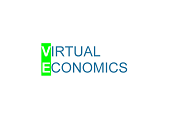Application of artificial intelligence in control systems of economic activity
DOI:
https://doi.org/10.34021/ve.2019.02.03(3)Keywords:
artificial intelligence, audit, control, economic activity, methodology, conceptAbstract
The implementation of the tasks of evaluating historical financial information, the control or audit of business activities are based primarily on professional judgments about the object of study of a professional accountant or auditor. Their findings are drawn on the review of documents, the use of audit evidence, risk assessment, etc. There is always a probability (and rather high) that professional judgment will be based on incomplete information (since the dynamics of information changes is extremely high today), on the misstatements (since it is impossible to trace all the changes in knowledge related to the object of study), regardless of the quality of the performance of these individuals. In addition, the auditor often takes subjective decisions (for example, when choosing individual elements for the assessment from the general population), which also affects the degree of objectivity of his assessments. Artificial intelligence is the tool that could handle the entire set of knowledge, track all changes in the significant and important information, as well as in the insignificant and unimportant (which, however, also has an effect on the object of analysis). It does not have a work schedule or other restrictions on the time of work, so the comparison and analysis of information can be carried out around the clock, and the speed of data processing is determined by the processing power of the information systems, on which it operates, and is stably high. In this case, the artificial intelligence is ready to perform the tasks non-stop in real time till receiving the command of the termination of the process. This article proposes a methodology for the artificial intelligence use in the control systems of economic activity, reflects the artificial intelligence concept in the control systems of economic activity, indicates the goals, principles, tasks and its functions when checking an object.
Downloads
References
Allianz Global Corporate & Specialty. (2018). The Rise of Artificial Intelligence: Future Outlook and Emerging Risks. Retrieved from https://www.agcs.allianz.com/content/dam/onemarketing/agcs/ agcs/reports/AGCS-Artificial-Intelligence-Outlook-and-Risks.pdf
Bochulia, T., & Melnychenko, O. (2019). Accounting and analytical provision of management in the times of information thinking. European Cooperation, 1(41), 52-64. https://doi.org/10.32070/ec.v1i41.21
Bochulia, T., & Yancheva, I. (2017). Scenario maps of management as effective concept for sustainable development of enterprise. European Cooperation, 8(27), 44 – 52.
Dalevska, N., Khobta, V., Kwilinski, A., & Kravchenko, S. (2019). A model for estimating social and economic indicators of sustainable development. Entrepreneurship and Sustainability Issues, 6(4), 1839-1860. https://doi.org/10.9770/jesi.2019.6.4(21)
Deloitte (2018). Artificial Intelligence. Innovation Report 2018. Retrieved from https://www2.deloitte. com/content/dam/Deloitte/de/Documents/Innovation/Artificial-Intelligence-Innovation-Report-20 18-Deloitte.pdf
European Political Strategy Centre (European Commission). (2018, March 27). The Age of Artificial Intelligence: Towards a European strategy for human-centric machines. EPSC Strategic Notes, 29, 1-14. https://doi.org/10.2872/23955
Girchenko, T., & Kossmann, R. (2016). Implementation and development of digital marketing in modern banking business. European Cooperation, 12(19), 68 – 85.
International Auditing and Assurance Standards Board. (2018a). Handbook of International Quality Control, Auditing, Review, Other Assurance, and Related Services Pronouncements (2018 Edition), (Volume II). Retrieved from https://www.ifac.org/system/files/publications/files/IAASB-2018-HB-Vol-1.pdf
International Auditing and Assurance Standards Board. (2018b). Handbook of International Quality Control, Auditing, Review, Other Assurance, and Related Services Pronouncements (2018 Edition), (Volume II). Retrieved from https://www.ifac.org/system/files/publications/files/IAASB-2018-HB-Vol-2.pdf
Кwilinski, A. (2019). Implementation of Blockchain Technology in Accounting Sphere. Academy of Accounting and Financial Studies Journal, 23(SI2), 1528-2635-23-SI-2-412: 1-6. Retrieved from https://www.abacademies.org/articles/Implementation-of-Blockchain-Technology-in-Accounting-Sphere-1528-2635-23-SI-2-412.pdf
Kwilinski, A., Dalevska, N., Kravchenko, S., Hroznyi, I., & Kovalenko, I. (2019a). Formation of the entrepreneurship model of e-business in the context of the introduction of information and communication technologies. Journal of Entrepreneurship Education, 22(1S), 1528-2651-22-S1-337: 1-7. Retrieved from https://www.abacademies.org/articles/Formation-of-the-entrepreneurship-model-of-e-business-1528-2651-22-S1-337.pdf
Kwilinski, A., Volynets, R., Berdnik, I., Holovko, M., & Berzin, P. (2019b). E-Commerce: Concept and Legal Regulation in Modern Economic Conditions. Journal of Legal, Ethical and Regulatory Issues, 22(SI2), 1544-0044-22-SI-2-357: 1-6. Retrieved from https://www.abacademies.org/articles/E-Commerce-concept-and-legal-regulation-in-modern-economic-conditions-1544-0044-22-SI-2-357.pdf
Lakhno, V., Malyukov, V., Bochulia, T., Hipters, Z., Kwilinski, A., & Tomashevska, O. (2018). Model of managing of the procedure of mutual financial investing in information technologies and smart city systems. International Journal of Civil Engineering and Technology, 9(8), 1802-1812. Retrieved from http://www.iaeme.com/MasterAdmin/UploadFolder/IJCIET_
_08_181/IJCIET_09_08_181.pdf
Melnychenko, O., & Hartinger, R. (2017). Role of blockchain technology in accounting and auditing. European Cooperation, 9(28), 27 – 34.
Omoteso, K. (2012). The application of artificial intelligence in auditing: Looking back to the future. Expert Systems with Applications, 39(9), 8490-8495. https://doi.org/10.1016/j.eswa.2012.01.098
PricewaterhouseCoopers. (2018). 2018 AI Predictions. 8 insights to shape business strategy. Retrieved from https://www.pwc.es/es/home/assets/ai-predictions-2018-report.pdf
Russell, S. J., & Norvig, P. (2016). Artificial Intelligence : A Modern Approach (Third Edition). Harlow: UK: Pearson Education Limited.
Select Committee on Artificial Intelligence (House of Lords). (2018, April 16). AI in the UK: ready, willing and able? Report of Session 2017–19. London: House of Lords. Retrieved from https://publications.parliament.uk/pa/ld201719/ldselect/ldai/100/100.pdf
SPACE. (2016, May 13). The future of the world: a forecast up to the year 2099. Retrieved from http://earth-chronicles.com/science/the-future-of-the-world-a-forecast-up-to-the-year-2099.html
UNESCO. (2018). Artificial Intelligence: The promises and the threats. The UNESCO Courier, July-September 2018, 1-70. Retrieved from https://unesdoc.unesco.org/ark:/48223/pf0000265211
Winston, P. H. (1992). Artificial intelligence (3rd ed.). New York: Addison-Wesley Publishing Company. Retrieved from https://courses.csail.mit.edu/6.034f/ai3/rest.pdf





